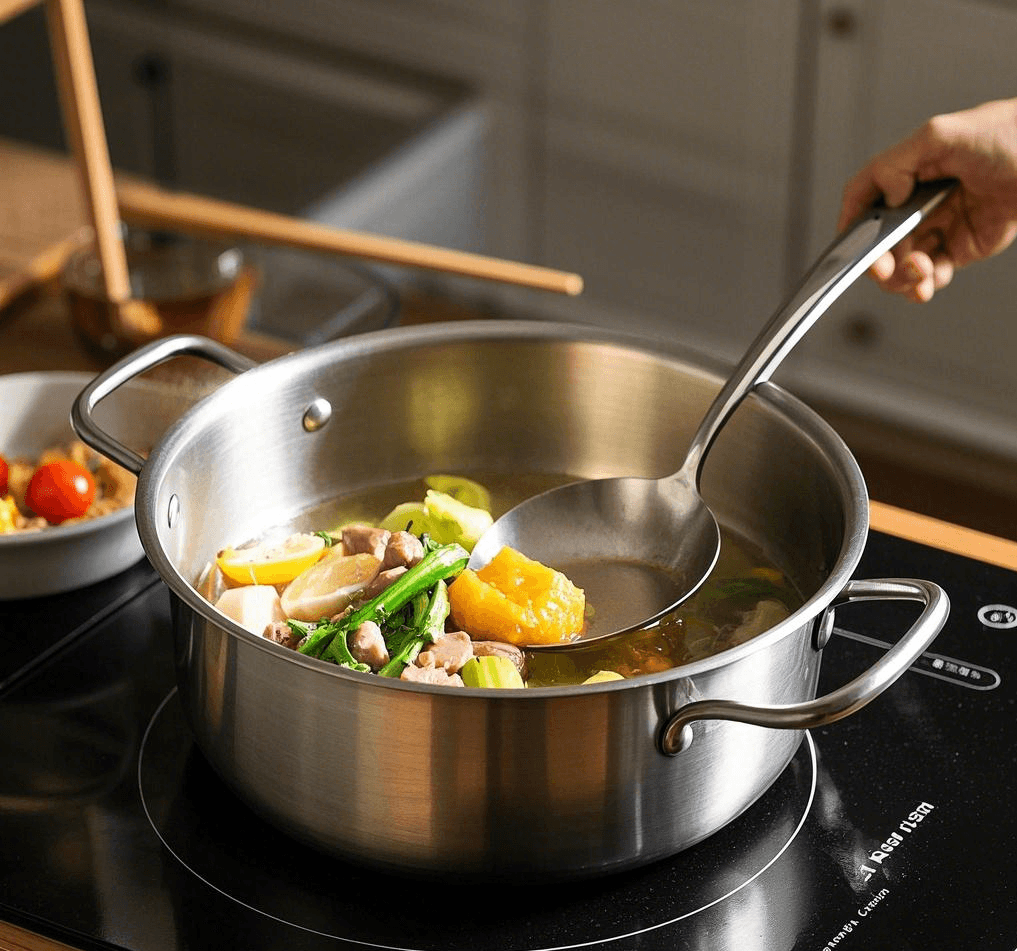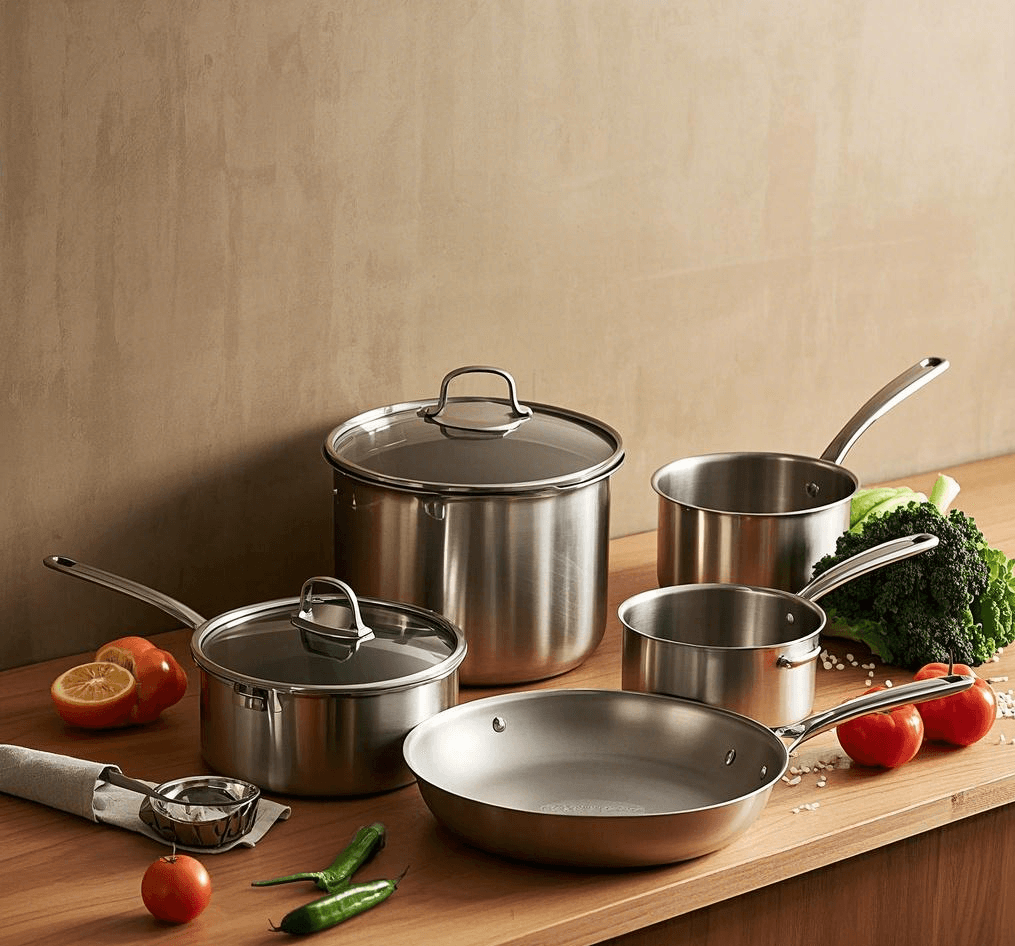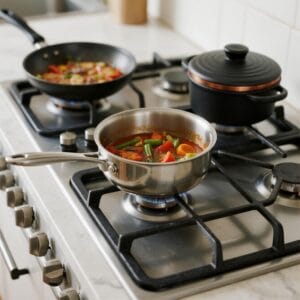Introduction: Ergonomics in Triply Cookware Selection
Triply cookware, renowned for its layered construction and cooking performance, becomes even more valuable when designed with ergonomics in mind. Beyond heat distribution and durability, ergonomic features enhance comfort, safety, and ease of use—crucial for enjoyable cooking. But what specific ergonomic aspects should consumers prioritize when choosing triply cookware? This article highlights key features to consider for a user-friendly experience.
Consumers should consider handle design, weight distribution, lid grip, and overall balance as ergonomic features when selecting triply cookware for optimal usability.
Let’s explore these elements to ensure your triply cookware fits both your kitchen and your hands.

How Does Handle Design Impact Ergonomic Comfort?
The handle is the primary point of interaction with triply cookware, making its design critical for comfort and control.
- Shape and Contour: Curved or angled handles that fit the hand’s natural grip reduce strain during lifting or tilting. The International Housewares Association recommends testing handles for a secure, comfortable hold.
- Heat Resistance: Handles that stay cool, often hollow or insulated, prevent burns during stovetop use. This is a standout feature in premium designs.
- Attachment: Riveted handles, as seen in Triply Circle Titanium’s offerings, provide stability and durability, ensuring safe maneuvering over time.
Ergonomic handles with a contoured, heat-resistant design enhance comfort and safety in triply cookware.
Why Is Weight Distribution Key to Ergonomic Triply Cookware?
Proper weight distribution affects how triply cookware feels in use, balancing performance with ease of handling.
- Balanced Weight: Cookware should feel substantial yet manageable—too light risks flimsiness, while too heavy causes fatigue. A thick core paired with a lightweight exterior strikes the right balance.
- Handle Offset: A well-positioned handle offsets the weight of a full pan, reducing wrist strain. Triply Circle Titanium emphasizes this in their ergonomic designs.
- Test Method: Lift the cookware with one hand; it should feel steady without tipping forward or back.
Even weight distribution with a supportive handle ensures triply cookware is easy and comfortable to use.
How Do Lid Grips Contribute to Ergonomic Functionality?
Lid design, particularly the grip, plays a subtle but significant role in the ergonomics of triply cookware.
- Knob Shape: Large, easy-to-grasp knobs or handles on lids allow safe lifting without burning fingers, especially when hot. Flat or recessed grips can be harder to manage.
- Heat Management: Stainless steel or insulated lid grips that resist heat improve safety, a feature often highlighted by brands like All-Clad.
- Visibility: Glass lids with ergonomic grips let you monitor food without lifting, reducing repetitive strain.
Ergonomic lid grips enhance safety and convenience, making triply cookware more user-friendly.
What Role Does Overall Balance Play in Ergonomic Design?
The overall balance of triply cookware ties together its components, ensuring it feels intuitive and stable during use.
- Proportions: A pan’s diameter, height, and handle length should align for stability—oversized bases with short handles can feel unwieldy. The Cookware Manufacturers Association notes balance as a sign of quality design.
- Center of Gravity: Cookware should sit flat and steady on the stovetop, with weight distributed to prevent tipping when full.
- Practicality: Triply Circle Titanium crafts pieces with balanced proportions, making them effortless to maneuver from stove to sink.
Well-balanced triply cookware minimizes effort and maximizes control for an ergonomic cooking experience.
How Do Additional Features Enhance Ergonomic Appeal?
Beyond the basics, extra ergonomic touches can elevate triply cookware’s usability and comfort.
- Helper Handles: Larger pots with secondary handles on the opposite side, like those from Demeyere, ease two-handed lifting, reducing strain on wrists.
- Non-Slip Surfaces: Textured or coated grips on handles or knobs improve traction, especially with wet hands.
- Oven Versatility: Ergonomic handles that double as oven-safe, as noted in Triply Circle Titanium’s insights, add flexibility without compromising comfort.
Additional ergonomic features like helper handles and non-slip grips refine triply cookware’s practicality.

Claim: Ergonomics Define Triply Cookware Usability
Handle design, weight distribution, lid grips, balance, and extra features collectively determine how ergonomic triply cookware is, directly affecting comfort, safety, and efficiency. Prioritizing these ensures a seamless cooking experience.
Conclusion: Selecting Ergonomic Triply Cookware Wisely
From my perspective, ergonomic features are essential when choosing triply cookware, transforming it from a tool into an extension of your hands. By focusing on contoured handles, balanced weight, and thoughtful details, you can pick cookware—like that from Triply Circle Titanium—that feels as good as it performs as of March 03, 2025. These considerations guarantee a comfortable, enjoyable cooking journey.






